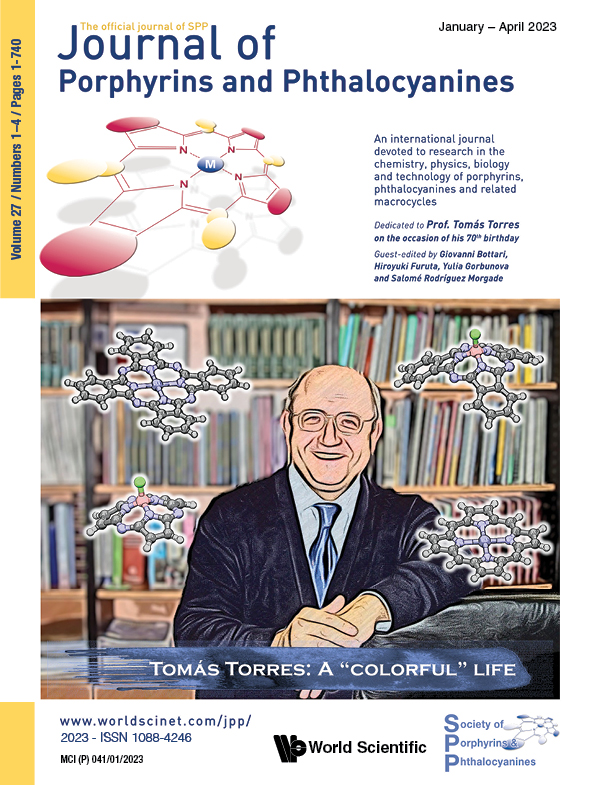Synthesis of heterometallic binuclear cobalt(II) phthalocyanines and their catalytic activity in the oxidation of a mercaptan
Abstract
A conjugated planar dicobalt binuclear phthalocyanine 2CoCo exhibits extremely high catalytic activity in the oxidation of a thiol to the corresponding disulfide. Therefore this complex is interesting in the petroleum industry for the desulfurization of petroleum fractions. It is now necessary to study the reason and mechanism of the high activity of the cobalt complex. We describe the synthesis of different monocobalt binuclear Pcs 2CoM2 where the second Pc ring with M2 is either metal-free or metalated with Zn(II) or Ni(II) which were found to be redox-inactive in their Pc complexes. Then the catalytic activities of these heterometallic binuclear complexes are compared with the activity of the binuclear 2CoCo. Further, the activity of the mononuclear 1Co is considered for comparison. On the basis of the data obtained, it can be decided whether the high catalytic activity of the binuclear 2CoCo is a result of a cobalt-cobalt electronic exchange or a π-system extension.

Dedicated to Prof. Tomás Torres on the occasion of his 70th birthday
Handbook of Porphyrin Science now available in 46 volumes


